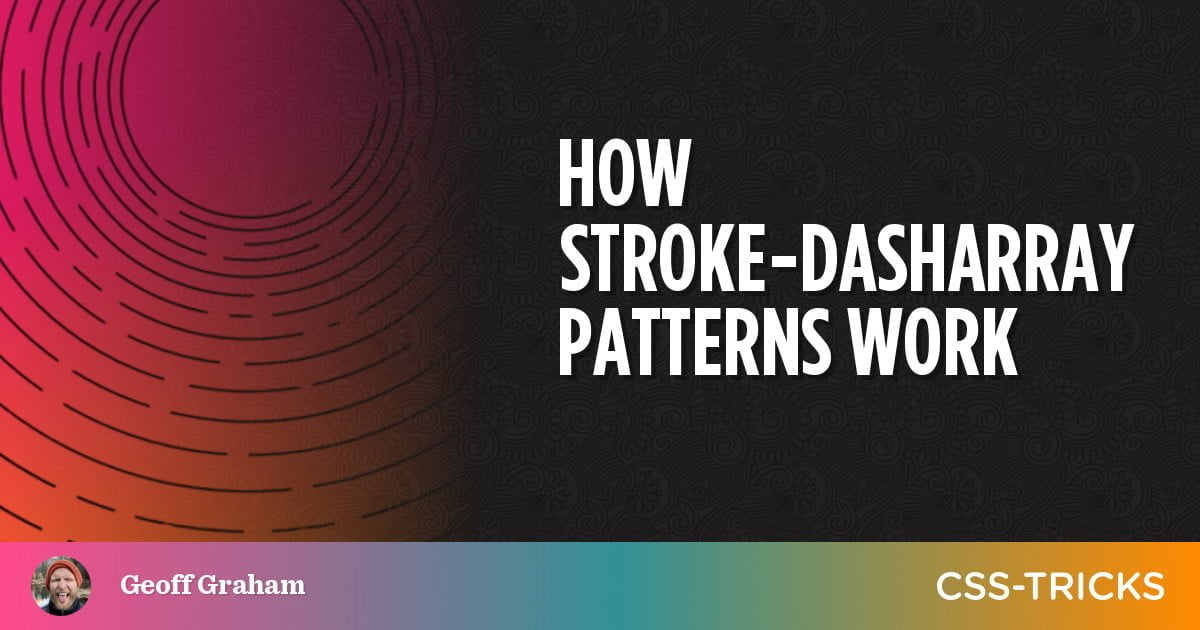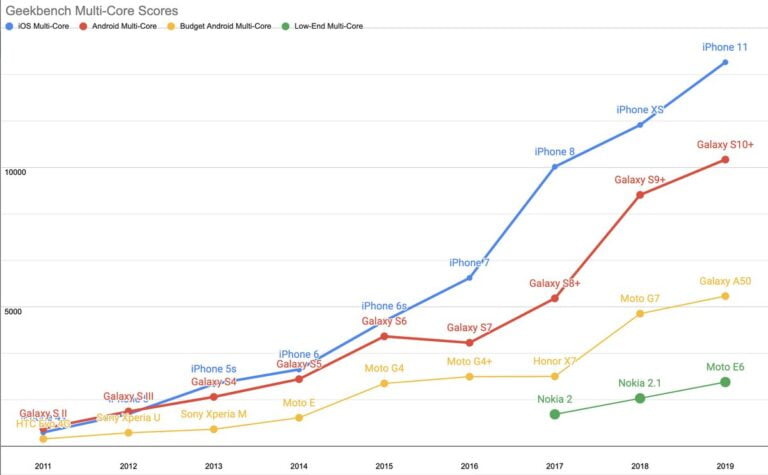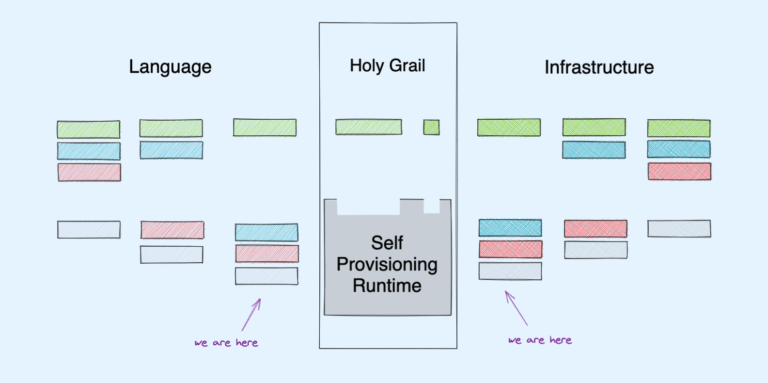
Say you have a line in SVG:
<svg> <line x1="0" y1="30" x2="500" y2="30" stroke-color="#f8a100" />
</svg>You can use the stroke-dasharray property in CSS to make dashes:
line { stroke-dasharray: 5;
}That 5 value is a relative unit based on the size of the SVG’s viewBox. We could use any CSS length, really. But what it does is make a pattern of dashes that are 5 units long with 5 unit gaps between them.
So far, so good. We can use two values where the second value individually sets the gap length:
Now we have dashes that are 5 units and gaps that are 10. Let’s try a third value:
See how we’re forming a pattern here? It goes:
- Dash: 5 units
- Gap: 10 units
- Dash: 15 units
You’d think it repeats after that in the exact same cadence. But no! It if did, we’d have dashes bumping into one another:
- Dash: 5 units
- Gap: 10 units
- Dash: 15 units
- Dash: 5 units
- Gap: 10 units
- Dash: 15 units
- …and so on.
Instead, stroke-dasharray gets all smart and duplicates the pattern if there are an odd number of values So…
stroke-dasharray: 5 10 15; /* is the same as */
stroke-dasharray: 5 10 15 5 10 15;That’s actually why a single value works! Earlier, we declared a single 5 value. That’s really the same as saying stroke-dasharray: 5 5. Without the second value, stroke-dasharray implicitly duplicates the first value to get a repeatable pattern. Otherwise, it’d just be a solid line of dashes that are 5 units long, but no gaps between them!
The pattern also depends on the size of the shape itself. Our SVG line is 500 units. Let’s set larger stroke-dasharray values and add them up:
stroke-dasharray: 10 20 30 40 50; /* 150 units */If the pattern runs four times (150 units ⨉ 4 iterations), we’re dealing with 600 total units. That additional 100 units is lopped off to prevent the pattern from overflowing itself.
That’s all.
???? Hat tip to Joshua Dance for calling this out!






